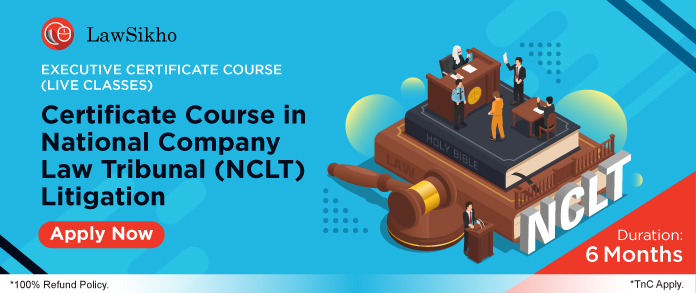This article is written by Samaradhi Pandey, student of Jamanlal Bajaj School of Legal Studies, Banasthali Vidyapith.
THE GUEST: MM KUMAR, Former Judge at Punjab High Court, Chief Justice at Jammu and Kashmir Court and First President of the National Company Law tribunal
THE HOST: KOMAL SHAH
Personal career and experiences
Earlier in 1977, Litigation was the most preferred field and there were hardly any law firms as they are now. So I started my practice in the subdivision of district Sundrus and when I filed my first case, a very senior lawyer who already had completed five years at the bar opposed me for a suit for recovery of money. The question was whether to frame an issue concerning interest? The senior lawyer gave his contentions to disregard the issue, whereas I re-phrased my submissions and presented them to the judge, the judge held the issue to be submitted.
The senior lawyer later came to me after the court came to me patted my back and inspired me.
In 1981, I completed my thesis of LLM. from England.
1984 to 1990, I started teaching and simultaneously practiced in courts in front of full benches.
Many times I advise people not to go to court and file suit. You should always do what will be in the best interest of clients and suit. When the clients become persistent to you for filing the suit, be sure you have done your job and then continue doing your job. Surprisingly, the judges at the bench decided to put the matter on stay. The important lesson learned there is if you practice honesty in your work it will repay you as well as your clients. Even today, when 10 potential clients come to my offices I accept four to five cases at max. One must stick to ethics in the profession.
I was offered to become a district judge at the age of 35 years, which is the minimum age of appointing a lawyer as a judge. I was amazed at the opportunity. In those days there was no examination, only viva. When I asked my seniors about this they said that we take your examination every day, you are required to fill-up the form and start preparing for your viva. Punjab in those times was facing internal threats due to which my father asked me to refuse the opportunity. I tried talking to him but later I had to say no to my seniors. Till then, I had finished my 6 years at Punjab Law Association department and contested in the elections to become vice president of the association. I won the elections and became the Vice president.
In 1995 I became an additional advocate general of Punjab and in 1998 I was offered judgeship for the first time but due to some miscalculations, my name was kept in waiting because I was the youngest person (45 years) list. The then Honorable Chief Justice told me that my name was to be kept on the waiting list. Eventually, I was elevated on 1st July 2001. So from 2001 to 2012, I was on the bench at Punjab and then in 2012, I was on the Bench at Jammu and Kashmir. It was very difficult to keep up with the work. It was very difficult to conduct curt meetings. I started the video conferencing and I remember Chief Minister Omar Abdullah telling me your judges are no longer seen on airports for attending the wing meeting and courts. By video conferencing, meetings within the courts as well as meetings with the district judges were possible. When the floods hit in Srinagar, the courts were unable to function, then I asked the chief minister to allot us space where we can continue proceedings and meetings.
Then it was decided that the High Court will start running from a house of a judge which was lying empty. On the top floor the judges, staff on the first floor, and high court on the ground floor. We noticed that not a very big infrastructure was needed to entertain cases. We entertained 140 cases there and the biggest relief to the public was the claims of insurance, about 300 crore rupees insurance claims were distributed. The insurance was holding its ground to not to give the claims until the survey was out. It was held that in extraordinary situations extraordinary remedy is needed, the insurance companies were asked to pay 50% of the amount. They went to challenge the verdict in the Supreme Court but the then Chief Justice Dattu dismissed the appeal of the insurance companies. He then told the attorney general that the chief justice of Jammu and Kashmir has been a victim of the flood himself so he knows what proper remedy should be given to people at this point. He later visited Jammu and Kashmir. I am very proudly able to say that even in those trying circumstances I was able to dispose of my duties.
In Jan 2015, I vacated the bench of Jammu and Kashmir and was appointed as the president of the National Company Law Tribunal. Till then the Insolvency and Bankruptcy code was also conferred and as I was the first president of the tribunal. At that time there were 16 benches all over the country and by the time I left there were 28 benches. Mr. Arun Jaitley, the finance minister remarked that it was the first tribunal which proved its efficiency in the least time.
Transactional lawyer to litigation lawyer
The controversy between litigation lawyers and transactional lawyers is now an age-old concept. Most universities provide placements. A large number of law firms come forward to engage with them. I advise them not to work for 18 hours a day. Some parameters have to be placed. Both of them must have mastery of the law. In the McDonald case, the joint venture agreement is drafted by a transactional lawyer, we find a clause that ultimately was illegal in the agreement.
Amazingly, NCLT and the Company Law Board have jurisdiction to declare a clause of joint venture contract as illegal if it goes against the interest of the company. It was amazing how the transactional lawyer who drafted the agreement missed the clause because the McDonald’s US was in the dictating terms to keep the clause. Transactional lawyers’’ work is multi layered and multi functional. At the same time,, the litigation lawyer have to be good in his oratory. Transactional lawyers focus on drafting and agreement whereas litigation lawyers have to be a very good orator in order for the judge to listen to him. Litigation lawyer has to face the judge. The difference of working between a transactional lawyer and litigation lawyer is the appearance in front of the different courts. Many litigation lawyers have the skill of making people listen to them. A transactional lawyer or a litigation lawyer both can switch sides by keeping one factor in mind which is to learn the basic and predominating skills of the sides.
To switch from transactional to litigation, one has to be careful about oratory, and to switch from litigation to transactional, you have to be careful about the drafting. Many professors switch into litigation lawyers. The reason why youngsters prefer to be transactional lawyers is security. The transactional lawyers sometimes do not want to argue in the courts, but like drafting agreements and orders. Many factors easily affect the young minds to pursue transactional law as a career. Many transactional lawyers appear before the tribunal, but don’t possess the art of oratory. Whether a litigation or transactional in-house lawyer, if there is a resolute determination, honesty and faith, then everything will follow. One should always have this in mind. Confidence is the key.
LawSikho has created a telegram group for exchanging legal knowledge, referrals and various opportunities. You can click on this link and join:
 Serato DJ Crack 2025Serato DJ PRO Crack
Serato DJ Crack 2025Serato DJ PRO Crack











 Allow notifications
Allow notifications



